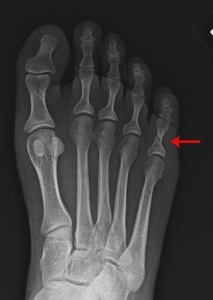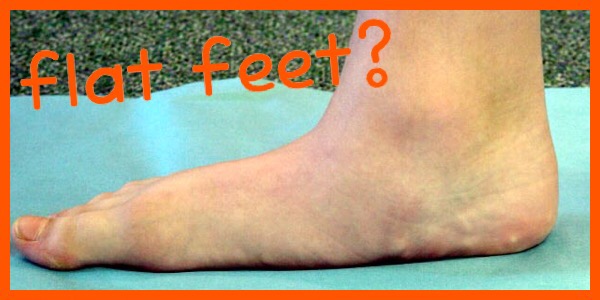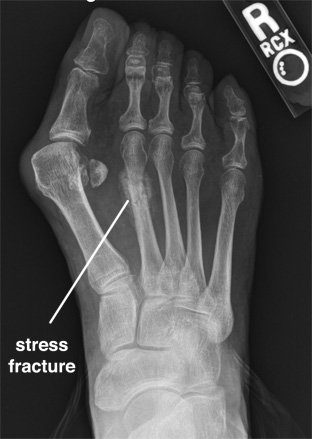Blisters from running: To pop, or not to pop.
Is it normal to get blisters from running? Well, obviously blisters aren’t normal, but maybe it’s ok from picking up the pace a bit? Right? Very similar to the person who has lost half of their toenails and says, “I just ran a marathon! What do you expect for 26 miles!” (I will leave the nail injuries for another post). To answer the question, no. Blisters should not occur regardless of how far you ran.
Our body is amazing in that it has a built in protective mechanism known as pain. Pain is usually the first sign we are experiencing something wrong, or about to become wrong. When a blister occurs, it is preceded by a warming or burning effect to the skin or tissue where abnormal pressure or friction is being applied. Many times this can be subtle to a runner, but is noticeable. The pain may then decrease if the running continues as we experience an intolerance. At this point the blister begins. A disruption between the epidermis and dermis begins and fluid starts to invade this space. If the activity continues or the pressure is severe enough, bleeding can occur as the capillaries become ruptured. This is sometimes referred to as a “blood blister”. Continued activity at this point will probably create a rupture of the epidermis causing a release of the fluid and blood. This is actually a good thing. Consider that if the pressure is not released, it can continue to accrue and cause damage to the underlying tissues resulting in more severe injury.
So what should we do when we take off our shoe and encounter this? The pressure needs to be released and this is done by first puncturing the epidermal layer of the blister (outer skin). Try to puncture in a manner which allows gravity to let the fluid flow into a gauze pad held below it. This can be accomplished with a needle or manicure scissors after sterilizing by wiping with isopropyl alcohol. The key is to remove the outer layer of the blister to reduce the pressure and allow for the underlying skin to heal. Initially this skin may be tender and “burn” but can be treated with triple antibiotic ointment and an outer covering such as a bandaid or gauze. Warm soapy water is all that is needed to wash the blister. Soaking can be performed if there is debris in the wound, but is not needed (soaking for 15-20 minutes can help clean out the debris with less pain).
Blisters will heal with rest. Usually running can resume after 48-72 hours, or even faster depending on the severity of the pain. The key is to find out what created the pressure. In most cases it is poor form combined with ill fitting shoes. Blisters are not normal, even in marathoners!!!


Related Posts
-
 Running with a toe fracture. Is it safe?
52 Comments | Jul 23, 2013
Running with a toe fracture. Is it safe?
52 Comments | Jul 23, 2013 -
High-heeled shoes may look good, but they’re bad for your feet.
No Comments | Jun 22, 2013
-
 Can I still run with flat feet?
7 Comments | Oct 22, 2014
Can I still run with flat feet?
7 Comments | Oct 22, 2014 -
 What exactly is a stress fracture?
No Comments | Mar 17, 2014
What exactly is a stress fracture?
No Comments | Mar 17, 2014
About The Author
Dr. Nick Campitelli
Dr. Campitelli is a podiatrist in Akron, OH specializing in foot and ankle surgery with an interest and enthusiasm for running as well as helping runners with injuries. For the past several years he has been treating running injuries in patients by fixing their form and transitioning them to minimalist shoes. Having treated runners with all types of injuries through conservative measures with orthotics and shoe gear changes to reconstructive foot and ankle surgery, Dr. Campitelli has brought what works best and is most current to his practice as well as the Akron and Cleveland running communities.



I think the reason for blisters (and lost toe nails) should be addressed as well. Athletes are very quick to blame the shoes for blisters. While some shoes do sit on feet differently, I believe the core reason for blisters is movement of the foot inside the shoe. My “long run” pair of shoes is what most would consider too big for my feet. However I do a good job of landing under my general center of mass and my foot moves little inside the shoe at my habitual running pace. The reason runners often tighten their shoes before long descents is to stop their feet from moving around inside the shoe and causing blisters or lost toe nails. The reason people get blisters from running long distances has nothing to do with the actual distance, just that their form breaks down, resulting in blisters.